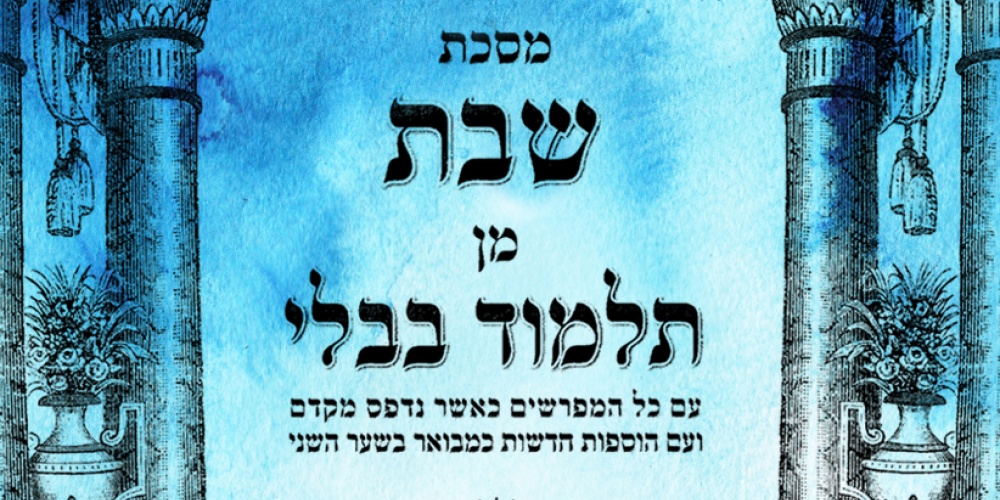
When it was still forbidden to write down the Oral Law, one of the very few written texts was that of Megillat Taanit, the scroll of fast days. This Megillah lists 35 days on which it was forbidden to fast, as they were days commemorating joyous events in Jewish history. Of the 35 days listed, only two remain applicable today, that of Purim and Chanukah. The others lost all meaning with the destruction of the Temple.
“Our Rabbis taught: Who wrote Megillat Taanit? Chananiah ben Chizkiyah and his companions shehayu mechavivim et hazarot, who loved troubles” (Shabbat 13a). As Rashi explains, they loved the troubles “that they were saved from, and the miracle is dear to them to mention and give praise to G-d”. This addition by Rashi quite cogently explains why Chananiah and his friends wrote Megillat Taanit. Hakarat hatov is one of the most basic values of Judaism, and surely, when one is saved from trouble, one must offer thanks both to G-d and to those created in His image who lent a helping hand.
Yet however valid Rashi’s idea might be, that is not what the Gemara says. The Gemara says that Chananiah and his friends loved tzarot, period. It does not say they loved salvation from tzarot. The Gemara could easily have stated, “Who wrote Megillat Taanit? Chananiah ben Chizkiyah and his companions shehayu mechavivim lehodot, who loved to give thanks to G-d”. But it did not.
It is for this reason, the Maharsha explains, that the scroll is called Megillat Taanit, the scroll of fasting. Had the Megillah focused on salvation and celebration, it would have been called something along the lines of Megillat Yom Tov. A book that is called Megillat Taanit is one that focuses on events of sadness and sorrow.
Many, perhaps the majority, of our rabbinic sages saw suffering, yeesurin, as theologically cleansing. G-d was punishing people in this world so that they might receive greater reward in the World-to-Come. Our Sages even coined a phrase for such suffering, yeesurin shel ahava, suffering that demonstrates love.
While the average person might have great difficulty with such a concept, presumably our great rabbis, like Chananiah and his friends, would embrace such suffering. “Better one hour of peace in the World-to-Come than all of this world” (Pirkei Avot 4:17).
Yet this was not the approach of Rav Chiyya and Rav Yochanan who, when asked if “the suffering [they endured] was beloved to them?” responded, “not them nor their rewards” (Brachot 5b). These Sages, amongst the greatest of the great[1], did not deny the concept of yeesurin shel ahava, they just preferred to have a little less reward in the next world and a lot less suffering in this world. Some welcomed afflictions of love, while others preferred to avoid them.
The notion that there is some kind of trade-off between suffering in this world and reward in the next may be quite comforting to some, helping them to cope with life’s challenges. Nonetheless, to offer such “comfort” to a person who is suffering would be a violation of ona’at devarim, of causing needless mental anguish (see Bava Metzia 58b). Even if true, there is nothing to be gained in saying this to someone else. And if, in fact, it is not true—and we humans have no way of knowing one way or another—then we have sinned not only against man, but also against G-d.
Theological views within Judaism are wide-ranging, and we can find support in our tradition for the notion that we need not suffer in this world and still have our full reward in the next world. This would even seem to be the more dominant view, being the one expressed in our daily tefillot. We beseech G-d to grant us good health, sustenance, joy, and so much more in this world while looking forward to “the main reward in the World-to-Come”. We want to have our cake and eat it, too.
One might be tempted to argue that such a view is at odds with that of Chananiah and his companions. They saw suffering as a sign of greater reward in the next world. But that is not necessarily so.
Perhaps they agree that in an ideal universe, we would have little pain and suffering in this world, and great reward in the next. But in an ideal universe, man would sin much less than he does, and would instead aim to perfect himself. But we do not live in an ideal universe. Thus, one might welcome suffering, not as a means of increasing one’s reward in the future, but as a means of self-improvement.
When life does not go as planned, it affords us an opportunity to examine what went wrong, learn the appropriate lessons and be better prepared next time.
Rav Soloveitchik noted that in our tradition, we do not ask lamah, why, but rather lemah, for what purpose[2]? We cannot understand why G-d does what He does, but we can try to discern lessons to learn from all that occurs. Chananiah and his friends may not have liked tzarot any more than we do. But they were thankful for the opportunity to learn and grow from them. Having done so, they could have much greater joy when the words of Rashi would be fulfilled and they would be redeemed from their travails. May that day come soon for us all.
[1] Rav Chiyya was the primary author of the Tosefta, and Rav Yochanan the editor of the Jerusalem Talmud. Tragically, Rav Yochanan lost ten children in his lifetime.
[2] When one recalls that the nekudot, indicating the proper method of vocalization of vowels, is a later addition to the Hebrew alphabet, this insight takes on greater meaning.



